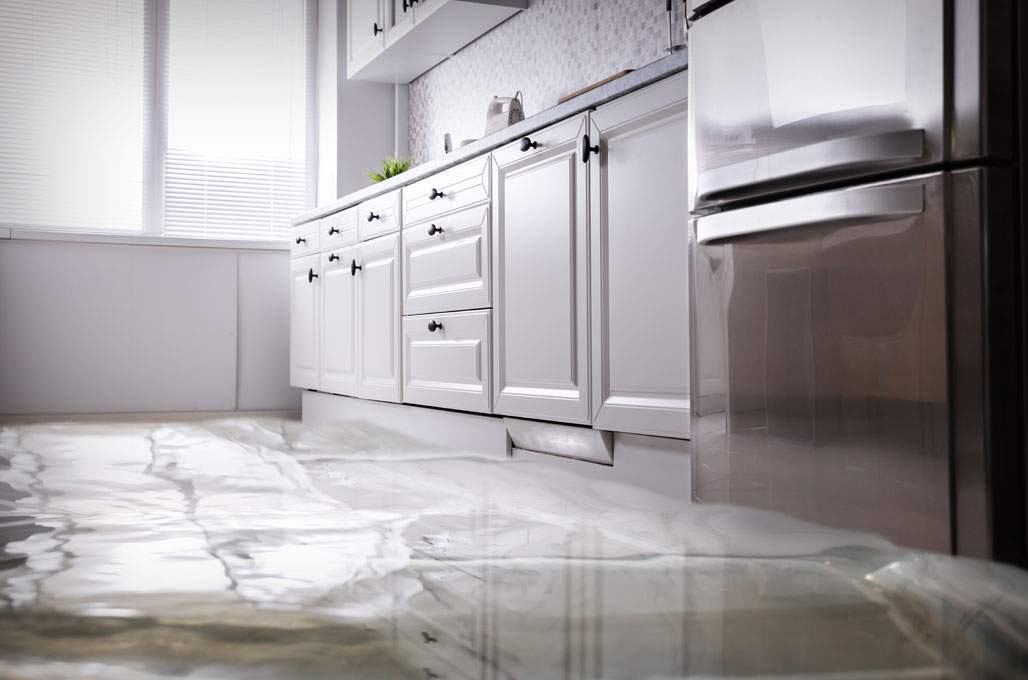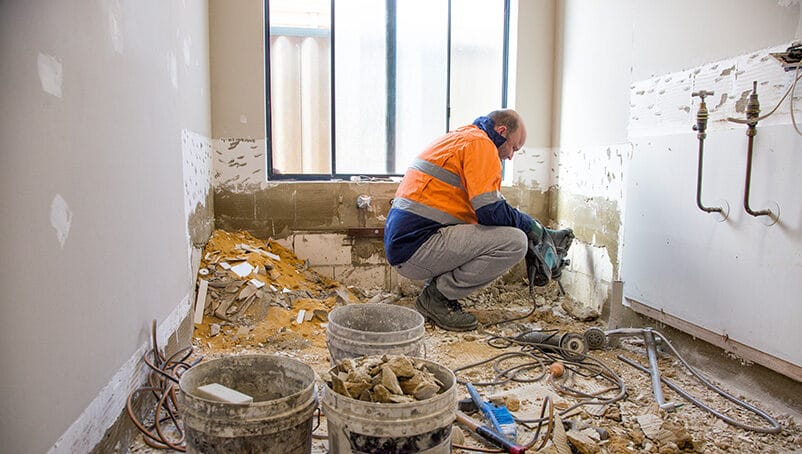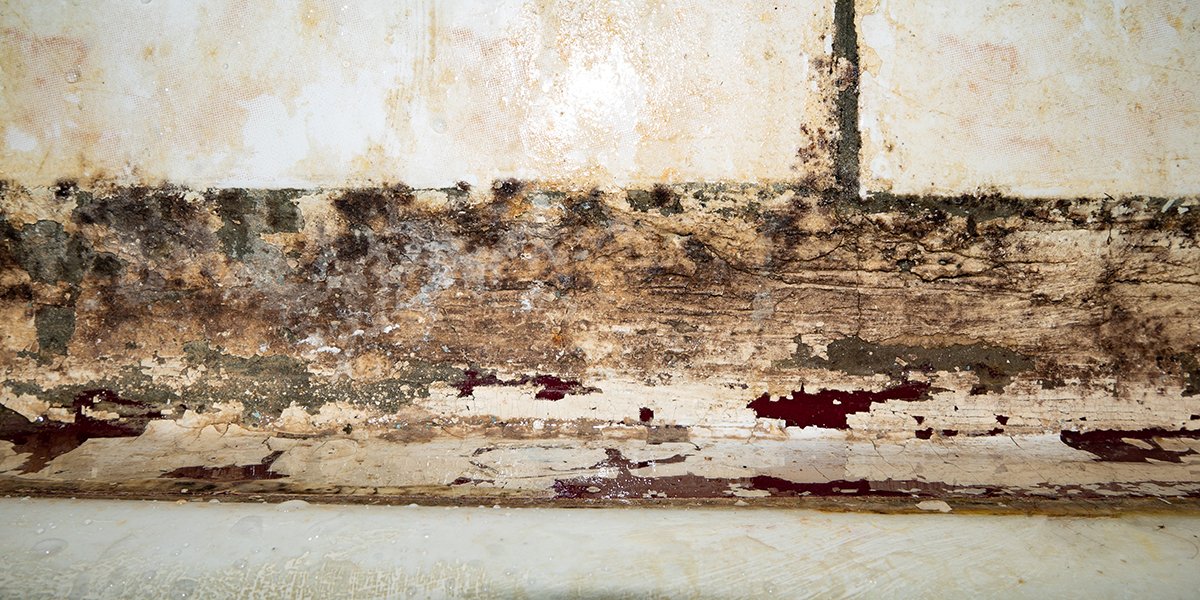Trusted Water Damage Repair Services for Residential and Commercial Properties
The Process of Water Damage Cleanup: Guaranteeing Your Home Is Brought Back Efficiently
Water damage can be a complicated obstacle for house owners, requiring a organized and thorough cleaning procedure to recover security and performance. Originally, a detailed assessment is critical to recognize the level of the damages and identify the appropriate removal measures. Following this, effective water removal strategies play a pivotal role in reducing additional injury. Nonetheless, the nuances of drying, sterilizing, and eventual remediation are equally necessary and usually forgotten. Recognizing these phases can make a substantial difference in the result of your home's restoration, triggering a closer take a look at what each step involves.
Assessing the Damages
Upon uncovering water damages, the very first step is to thoroughly analyze the extent of the effect. This initial analysis is important, as it aids determine the necessary steps for reliable cleanup and repair. Begin by inspecting the influenced areas, consisting of walls, ceilings, floorings, and personal items, to identify the resource of the water invasion, whether from flooding, leaks, or condensation.
Documenting the damages is essential for both insurance policy claims and intending restoration efforts - damage restoration services. Usage photographs and written notes to catch the severity of the damage, keeping in mind any kind of affected structural elements and materials. Pay special focus to locations that might not be right away visible, such as behind wall surfaces and under rugs, as hidden moisture can cause more issues, including mold development
In addition, assess the timeline of the water exposure. The longer the materials continue to be damp, the better the capacity for damages. Understanding the duration of exposure will educate the seriousness of remediation initiatives. Eventually, a detailed analysis lays the groundwork for a successful water damage cleanup process, guaranteeing that all impacted areas are attended to successfully and extensively.
Water Removal Strategies

Specialists normally use submersible pumps for larger volumes of water, which can swiftly relieve flooding in cellars or other impacted locations. For smaller sized amounts, wet/dry vacuum cleaners are typically used to draw out residual dampness from rugs and tough surfaces. Additionally, utilizing mobile extractors enables targeted elimination in restricted rooms or areas with delicate products.
In instances of polluted water, such as sewage or floodwater, progressed extraction strategies may include using biohazard devices to guarantee safety and security and compliance with health and wellness laws. High-powered extraction devices are essential in reducing water retention in architectural products, which can lead to mold growth and architectural damage otherwise attended to promptly.
Eventually, the effectiveness of water removal strategies plays a pivotal duty in the overall success of the water damages clean-up procedure, laying the groundwork for subsequent reconstruction initiatives.
Drying and Dehumidification
As soon as standing water has been properly drawn out, the next vital phase in the water damages cleaning procedure is drying out and dehumidification. This step is necessary to protect against further damages and mold and mildew development, which can occur within 24 to 2 days in moist settings.
To accomplish efficient drying out, specific tools such as industrial-grade air moving companies and dehumidifiers is used. Air movers flow air across wet surface areas, boosting dissipation rates, while dehumidifiers decrease humidity levels airborne, advertising a conducive atmosphere for drying. The combination of these tools makes sure that dampness is drawn out from floorings, furnishings, and walls, enabling them to completely dry extensively.
It is essential to check the drying procedure very closely. Specialists usually make use of moisture meters to assess find out here the moisture content in different products, making certain that all affected areas reach appropriate dryness levels. This thorough approach helps to protect against surprise moisture pockets that can bring about architectural damages or undesirable mold growth.

Cleaning and Sterilizing
After the drying and dehumidification stage is complete, the following crucial action in water damages cleanup is cleaning and sterilizing the impacted areas. This process is essential to stop the growth of mold, bacteria, and other microorganisms that grow in damp environments.
The cleansing phase commonly involves removing any type of debris, dust, and pollutants from surfaces using specialized cleansing representatives. For difficult surface areas, a mix of soap and water or business cleaning items is frequently employed. Soft materials, such as furniture and carpetings, might call for more comprehensive cleaning techniques, consisting of steam cleansing or deep extraction techniques, to make certain thorough sanitation.

Sanitizing complies with cleansing, using EPA-approved anti-bacterials to get rid of dangerous microorganisms. This step is important, specifically in areas that might have entered into call with floodwaters or sewage, as these resources can position significant health threats.
Furthermore, it is essential to resolve any continuing to be odors, which may need making use of smell neutralizers or innovative strategies like ozone therapy. Appropriate cleaning and disinfecting not just recover the safety and security and hygiene of your home yet also lay the foundation for successful repair and fixings in subsequent phases of the water damages clean-up process.
Remediation and Fixings

When the evaluation is full, remediation efforts can start. This typically involves repairing or changing damaged products, making sure that all job follows local building codes and criteria. For example, if drywall has actually been jeopardized, it will need to be removed and changed with brand-new product. In addition, floor covering might call for comparable focus, depending upon the degree of water exposure.
It is critical to engage knowledgeable restoration experts throughout this procedure, as they have the competence to handle complicated fixings effectively. Moreover, they can help alleviate possible future concerns, such as mold development or structural instability, therefore making certain a habitable and risk-free living environment. Inevitably, effective repair and repairs restore the home's stability and boost its general worth.
Verdict
In verdict, the procedure of water damages cleaning is crucial for restoring a home to its pre-damage condition. Each phase, from assessing the damage to implementing efficient water removal strategies, adhered to by thorough drying out, sanitizing, and needed repairs, plays a vital function in guaranteeing safety and security and compliance with building standards. Effective execution of these actions not just minimizes prompt damages but likewise improves the lasting integrity and value of the property.
Water damages can be an overwhelming obstacle for homeowners, demanding a structured and careful cleanup process to bring back safety visit this website and security and performance. Inevitably, a comprehensive evaluation lays the foundation for an effective water damage cleanup process, making certain that all affected areas are attended to properly and thoroughly.
Efficient water removal strategies are essential in reducing damage and stopping more complications complying with a water intrusion occasion.In conclusion, the process of water damages cleanup is crucial for recovering a home to its pre-damage problem. Each phase, from examining the damages to carrying out reliable water removal methods, followed by detailed drying out, disinfecting, and essential fixings, plays a crucial function in ensuring security and compliance with building standards.